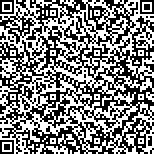下载中心
优秀审稿专家
优秀论文
相关链接
摘要

发展和应用三线阵CCD(Charge-coupled Device)传感器是当前遥感测绘的一个重要方向,本文针对国内首台自主研制的机载三线阵CCD相机(以下简称GFXJ),开展了国产GFXJ相机几何标定技术研究。首先对比分析了GFXJ相机的成像特点和几何变形因素,在此基础上建立了基于CCD指向角的分段自检校标定模型;然后提出了循环两步法标定方案;最后在中国(嵩山)卫星遥感定标场和黑龙江鹤岗地区获得了多组飞行实验数据,采用循环二步法对GFXJ相机前、下及后视CCD每一像元指向角进行了准确标定,并生成可靠的CCD像点坐标文件。实验表明,本文提出的基于CCD指向角的分段自检校标定模型和循环两步法标定方案对于GFXJ相机具有良好的适用性和有效性,标定后可大幅提高影像无控定位精度;辅以少量控制点进行区域网平差,GFXJ影像定位精度可满足1:1000地形图测图的空中三角测量精度要求。同时本文建立的标定模型和标定方案可为其它机载线阵CCD相机的标定处理提供借鉴。
The development and application of three-line array CCD (Charge-coupled Device)sensor is an important direction in remote sensing, surveying, and mapping. The objective of this study is to investigate the geometric calibration technology of the first Chinese self-developed airborne three-line array CCD camera (hereinafter referred to as GFXJ).In this study, a series of innovative research works is conducted on the geometric calibration technology of the domestic GFXJ camera. First, a comparative analysis is made on the imaging characteristics and geometric deformation factors of the GFXJ camera. Upon this camera, a piece-wise self-calibration model based on CCD tilt angle is established. The piece-wise self-calibration model absorbs the influence of various geometric distortion factors by using a segmented mathematical model to avoid over-parameterization and strong inter-correlation. At the CCD segment boundary, the model satisfies the equivalent and the smoothing constraints.Then, an iterative two-step calibration scheme is proposed to achieve stable and reliable calibration values. The aerial triangulation of exterior orientation elements and the calibration of additional self-calibrating parameters are performed independently and iteratively. The iterative two-step calibration process is implemented until the exterior orientation elements and additional calibration parameters reach stability and the changes between the two iterations are less than the threshold.Multiple sets of flight experimental data were obtained from the China Songshan remote sensing comprehensive field and Hegang area of Heilongjiang Province. The proposed iterative two-step calibration scheme was applied to set accurately the tilt angle calibration of each CCD detector in the forward, nadir, and backward CCD arrays. Reliable CCD image pixel coordinate files were generated for forward, nadir, and backward arrays independently.Experiment results showed that after calibration, uncontrolled image positioning precision can be greatly improved. Supported by several control points for bundle block adjustment, the image positioning accuracy of GFXJ camera can meet the 1:1000 scale topographic mapping requirements on aerial triangulation.From experimental results, we draw the following conclusions. First, the proposed piece-wise self-calibration model based on CCD viewing angle and the iterative two-step calibration scheme are suitable and efficient for the GFXJ camera. The geometric distortion factors, such as lens distortion, CCD rotation, and scaling, affect the accuracy of the height and positioning of the GFXJ camera and planar positioning, respectively. The piece-wise self-calibration calibration model based on tilt angles and the iterative two-step calibration scheme proposed in this study can effectively calibrate the inherent lens and CCD distortion errors of the GFXJ camera. Second, the GCPs layout scheme of “four corners” can ensure the aerial triangulation accuracy of GFXJ, but denser GCPs layout scheme had little contribution to accuracy improvement. Third, the calibrated CCD image pixel coordinate files can serve as a qualified and reliable calibration product for subsequent users. At the same time, the calibration method and research results proposed in this study can serve as reference for the geometric calibration research of other airborne three-linear array CCD cameras.

